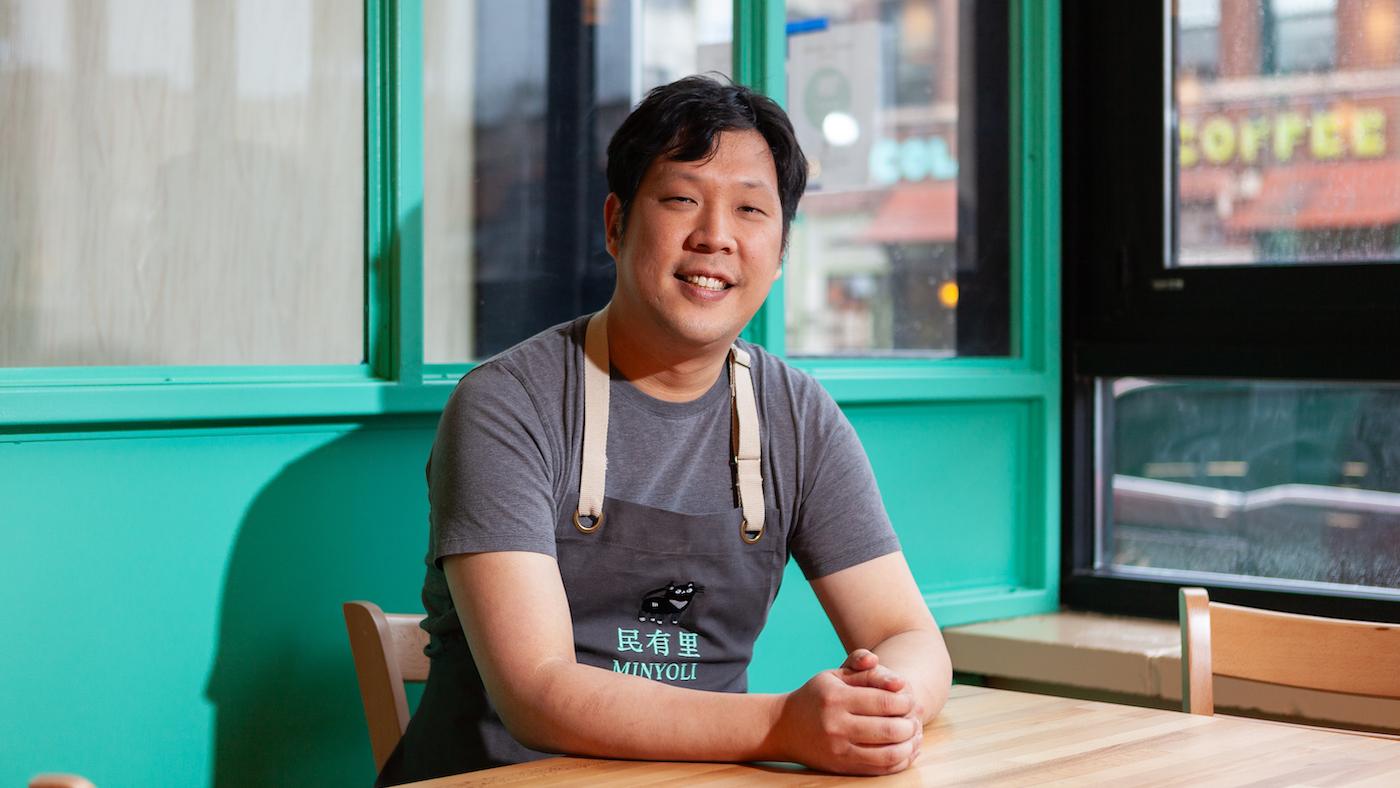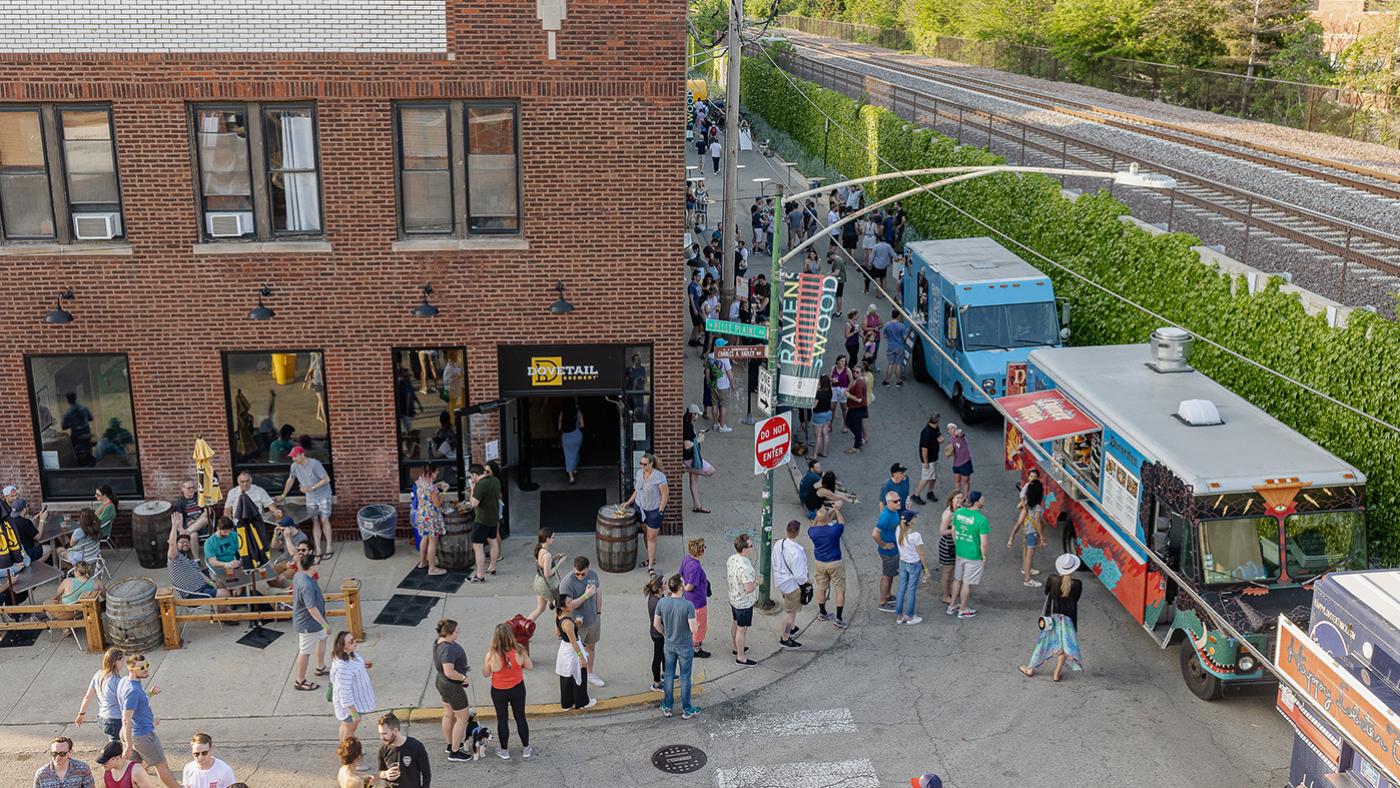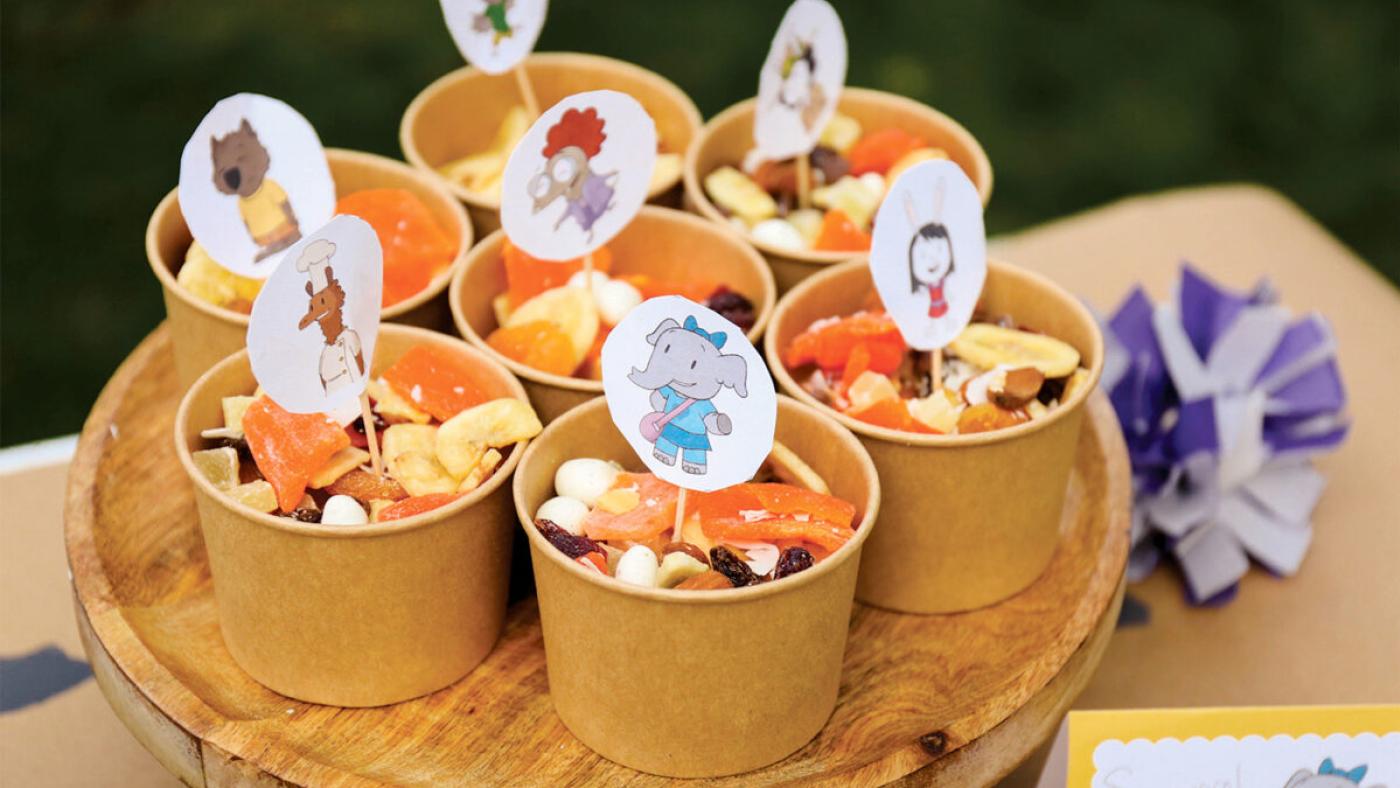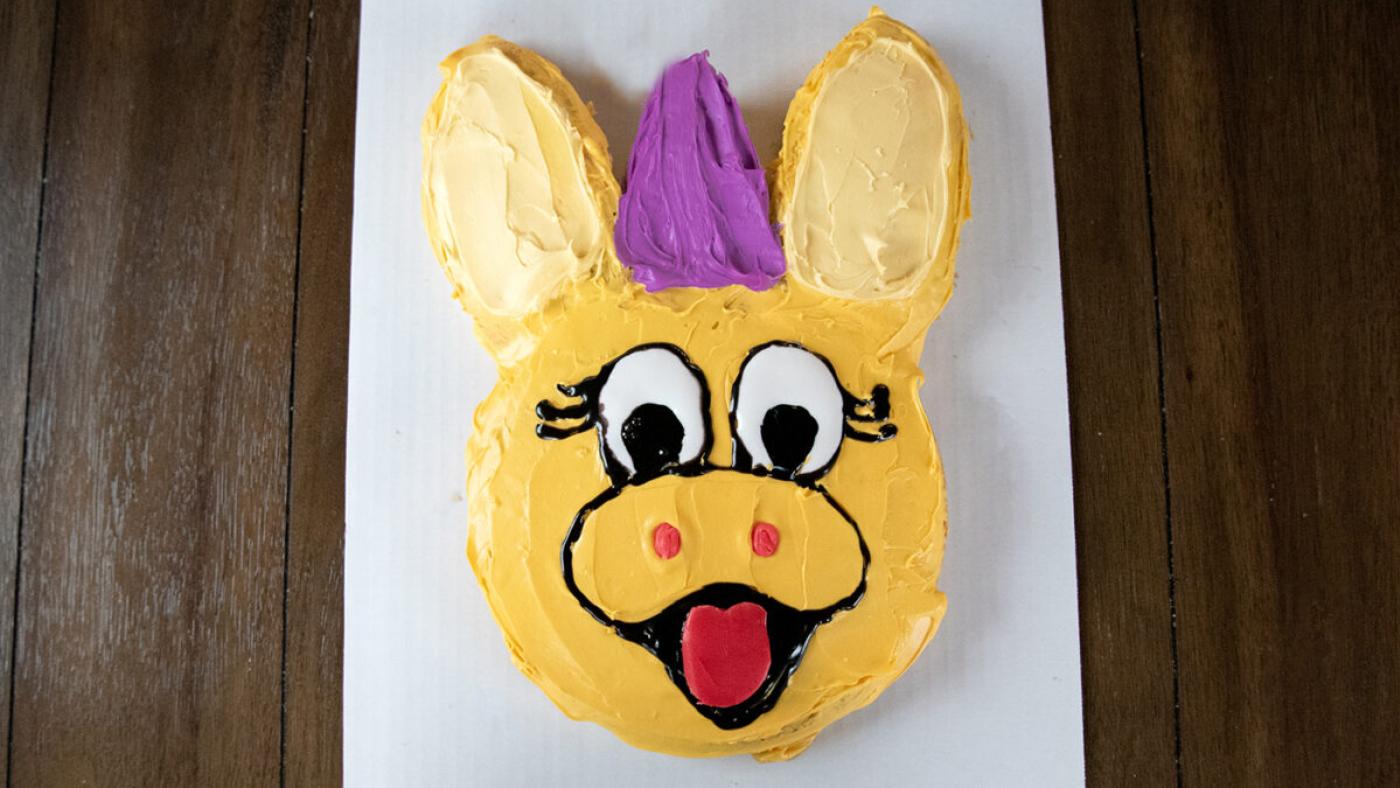Meet the “Willa Wonka” of the South Side, Who Creates Nostalgic Cakes, Candies, and Jobs
Daniel Hautzinger
October 24, 2023
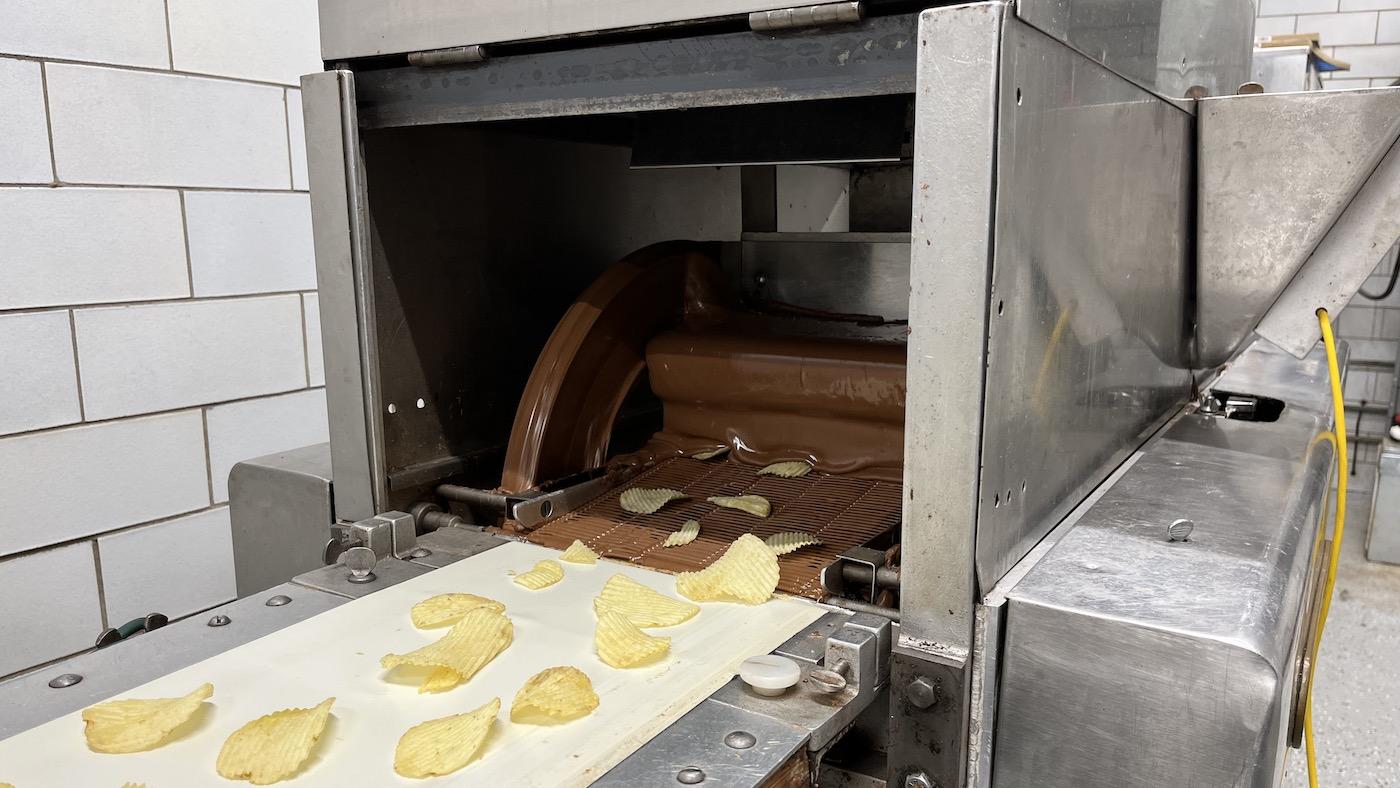
Chicago Stories: Candy Capital, which features Stephanie Hart and Life is Sweet, premieres on Friday, October 27 at 8:00 pm on WTTW and streaming on the PBS app and wttw.com/chicagostories.
Get more recipes, food news, and stories by signing up for our Deep Dish newsletter.
Stephanie Hart channels nostalgia through her sweet treats, but that doesn’t mean she’s stuck in the past. She draws on childhood memories, like her love of Snickers or Apple Jacks, when dreaming up new flavors or confections for her Brown Sugar Bakery and Life is Sweet candy line.
“Sugar makes a memory,” she says. When she was a kid, “Sunday was when Grandma made the cake, and you couldn’t wait to see what it was, and you got a piece, and it was just really enhanced and special.”
Yet she’s always thinking about the future, as a small business owner eager to create jobs and contribute to an economy in her community on the South Side. Brown Sugar Bakery’s famous caramel cakes are made and sold on a popular strip of 75th Street in Chatham that also contains Lem’s Bar-B-Q and Soul Veg City; the Life is Sweet chocolates are produced at the old Cupid Candies factory on Western Avenue in Ashburn.
“How do you have a community if you don’t have an economy?” she says. “I feel like a lot of times my community is overlooked for economy.” She employs 40 to 45 people between Brown Sugar and Life is Sweet and is hiring more.
“If you’re going to have any community that’s going to thrive, it needs to have certain elements, and one of them is places to work. And the better the places are to work, the better the community is going to be,” she says.
Hart has constant ideas for both new products and ways to expand her brand, fighting for more visibility for a Black-owned business and creating more and better jobs for her employees, who can be proud to have a part in desserts that ship nationwide and are sold at Macy’s, Dom’s Kitchen and Market, Soldier Field, and O’Hare, as well as various restaurants. (Most of the candy business is wholesale.)
That’s why she bought the Cupid Candies factory in 2020. “To preserve something in my community that produces products that export out of our community was an opportunity,” she says.
Cupid Candies was founded in 1936 by a Greek immigrant named Paul Stefanos, during a time when Chicago was the “candy capital of the world.” By 1940, Chicago confectioners were producing some 556 million pounds of candy per year. Candy companies in the city included Wrigley, Mars, and Brach’s, at one point employing over 25,000 people and producing a third of all candy in the United States.
Stefanos and his brother Leo started selling chocolate-dipped ice cream bars in the 1930s, and Leo would go on to invent the Dove Bar. Cupid Candies moved several times before settling in at the Western Avenue factory in the 1950s, where Paul kept making ice cream and covering things in chocolate. His son John was running the business when Hart bought the factory and kept its employees; John died several months later.
“The scariest thing I did was taking on their staff, but it was the best thing I did,” she says.
Hart didn’t buy Cupid’s recipes but has recreated many of them and continues to offer chocolate creams, meltaways in flavors like mint and raspberry, and chocolate nut and caramel clusters she calls tortues. A James Beard Award semifinalist, she has ideas for everything from Rice Krispies treats in flavors like lemon lavender to cake truffles using cake scraps from Brown Sugar Bakery to using the residual powder from crushing almonds for caramel apples to make almond milk for her employees.
She seems to relish becoming a candymaker. “It smells so good, Rosa!” she exclaimed on a recent visit to the Life is Sweet factory. She had just walked into what she calls the “Lucy room,” after the I Love Lucy episode in which Lucy and Ethel get a job at a chocolate factory. “How many times as a kid I saw that particular episode and wanted to work at the candy factory so I could stuff my mouth with candy!”
The room contains an enrober, which sends potato chips or other bites through a curtain of liquid chocolate to coat them. Hart has had to learn from longtime employees like Hazel Harris, who has been working at the factory for 35 years, how machines like the enrober or mixers that heat caramel run, but she has taken to it with gusto. “I call myself with Willa Wonka,” she says. “I’m having fun.”
But there are also the general struggles of a small business, especially one that is being revamped. While Hart is chatty and amiable, she reserves the spine needed to hold people in line and get the work she requires from them. She is just finishing up renovations to the Life is Sweet factory that are necessary but not glamorous: upgrading electrical and plumbing, improving air quality and employee areas.
While the construction took place, she moved all of her employees to the 75th Street bakery so that she could keep them on, despite the crowded space. Once the renovations are fully complete, some of Brown Sugar’s baking will move to the more spacious Life is Sweet factory, where new equipment should allow Hart to triple her production.
But Hart isn’t interested in growth for the sake of growth. “I’m not an entrepreneur that’s in it just for the money,” she says. “Profit isn’t my only goal. I want to be profitable because I want [Life is Sweet employee] Sandra’s baby to be able to go to college off of her job.”
Her current dream for her businesses is to set up some one-stop dessert shops that sell Life is Sweet candy and ice cream alongside Brown Sugar baked goods. That’s in addition to – and supportive of – her goal to create high-quality jobs for her community, by continuing to provide some stable manufacturing employment at a time when such a thing has almost disappeared. Just as she does with her desserts, she wants to bring the bright parts of a nostalgic past into the present.
“Why shouldn’t a person be able to buy a house two blocks from [the factory] and work in the area?” she says.
“I really hope that if I can do anything in my sixties, it’s to create a breadcrumb trail for people to move with their ideas from retail to manufacturing,” she continues. “I’m getting help with learning how to be a better citizen in manufacturing so that I can demonstrate for other businesses how to make that move.”

